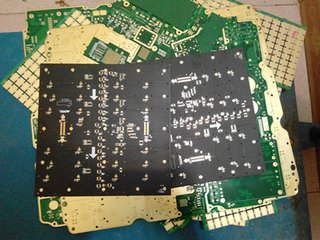-
CN
-
Service Hotline
+8618129931046 Mr. Liao


PCB wave soldering is a bulk soldering technique used to solder through-hole components onto printed circuit boards (PCBs) by passing the board over a molten wave of solder. This process is widely used in electronics manufacturing for its ability to solder multiple components simultaneously, making
 Aug 14, 2025
Aug 14, 2025
 1
1

PCB reflow soldering is a key step in surface mount technology (SMT) assembly, where solder paste applied to PCB pads is melted (reflowed) to form permanent electrical and mechanical bonds between surface mount components and the board. This process relies on precise temperature control to transform
 Aug 14, 2025
Aug 14, 2025
 1
1

PCB electrical testing is a crucial step in the manufacturing and quality assurance of printed circuit boards (PCBs), focusing on verifying the integrity of the board’s electrical connections and ensuring that it functions as designed. This type of testing detects issues such as short circuits, open
 Aug 13, 2025
Aug 13, 2025
 1
1

PCB lamination adhesive is a critical material used in the manufacturing of multi-layer printed circuit boards (PCBs), where it bonds together multiple layers of copper-clad laminates (CCLs) during the lamination process. This adhesive ensures that the layers remain securely bonded under various ope
 Aug 13, 2025
Aug 13, 2025
 1
1


PCB copper clad laminate (CCL) is a foundational material used in the production of printed circuit boards (PCBs), consisting of a dielectric substrate (base material) coated on one or both sides with a thin layer of copper foil. This material forms the base for creating the conductive traces, pads,
 Aug 13, 2025
Aug 13, 2025
 1
1

PCB surface finish smoothness refers to the uniformity and flatness of the exposed conductive surfaces (typically copper) on a printed circuit board after fabrication, playing a critical role in solderability, component adhesion, and long-term reliability. A smooth surface ensures consistent solder
 Aug 12, 2025
Aug 12, 2025
 1
1

PCB anti-oxidation treatment is a critical process applied to the copper surfaces of printed circuit boards to prevent the formation of copper oxide, which can degrade solderability, increase electrical resistance, and compromise the board’s long-term reliability. Copper is highly reactive with oxyg
 Aug 12, 2025
Aug 12, 2025
 1
1

PCB moisture-proof treatment is a set of processes designed to protect printed circuit boards from the damaging effects of moisture, which can cause electrical failures, corrosion, and degradation of mechanical properties. Moisture ingress is a significant concern in many environments, including hum
 Aug 12, 2025
Aug 12, 2025
 1
1

PCB mass production involves manufacturing large quantities of circuit boards (typically 500+ units) with consistent quality, cost efficiency, and adherence to strict specifications, serving industries such as consumer electronics, automotive, and telecommunications. This stage requires meticulous p
 Aug 09, 2025
Aug 09, 2025
 1
1

PCB rapid prototyping is an accelerated manufacturing process designed to produce small quantities of circuit boards (typically 1-50 units) in the shortest possible time, enabling fast design validation and iteration for time-sensitive projects. This service is particularly valuable for startups, re
 Aug 09, 2025
Aug 09, 2025
 1
1

PCB prototyping is a critical stage in electronics development, involving the creation of small-batch, functional circuit boards to test design concepts, validate performance, and identify potential issues before mass production. This process balances precision with flexibility, allowing engineers t
 Aug 09, 2025
Aug 09, 2025
 1
1

EMI (Electromagnetic Interference) Suppression PCBs are specialized printed circuit boards designed to minimize the emission of electromagnetic noise and reduce susceptibility to external interference, ensuring compliance with regulatory standards (such as FCC, CE, or CISPR) and preventing performan
 Aug 08, 2025
Aug 08, 2025
 1
1

High-Frequency Signal PCBs are specialized printed circuit boards designed to transmit signals at frequencies above 1 GHz, maintaining signal integrity and minimizing loss in applications such as RF (Radio Frequency) communication, radar systems, satellite technology, and 5G infrastructure. Unlike s
 Aug 08, 2025
Aug 08, 2025
 1
1

High-Frequency Antenna PCBs are specialized printed circuit boards that integrate antenna elements directly into their design, enabling the transmission and reception of radio frequency (RF) signals at frequencies above 1 GHz. These PCBs are essential in applications such as 5G smartphones, Wi-Fi 6E
 Aug 08, 2025
Aug 08, 2025
 1
1

The fatigue resistance of flexible PCB (FPC) boards is a critical performance parameter, especially in applications where they are subject to repeated bending, flexing, or vibration. Fatigue failure in FPCs typically occurs due to the accumulation of mechanical stress in the conductive traces and su
 Aug 07, 2025
Aug 07, 2025
 1
1
